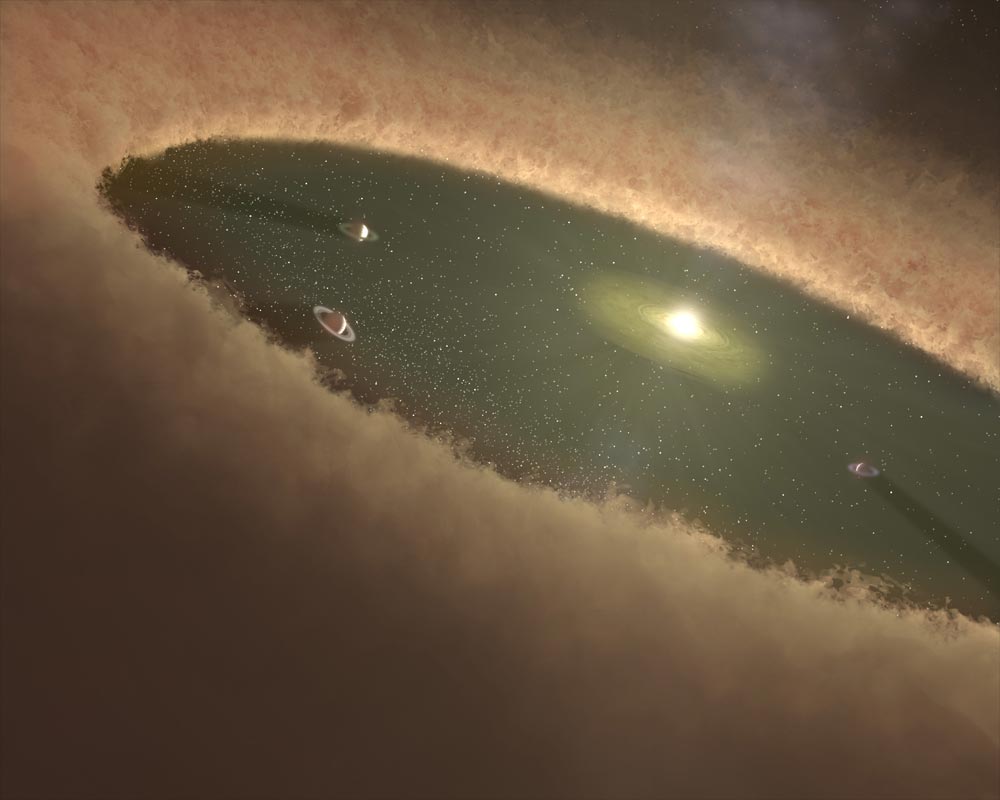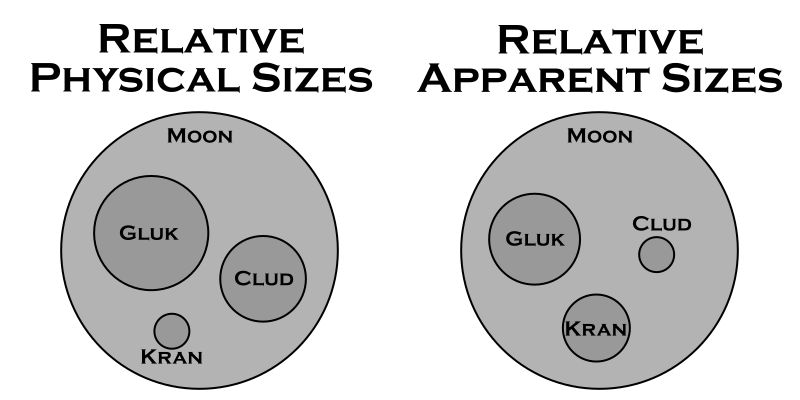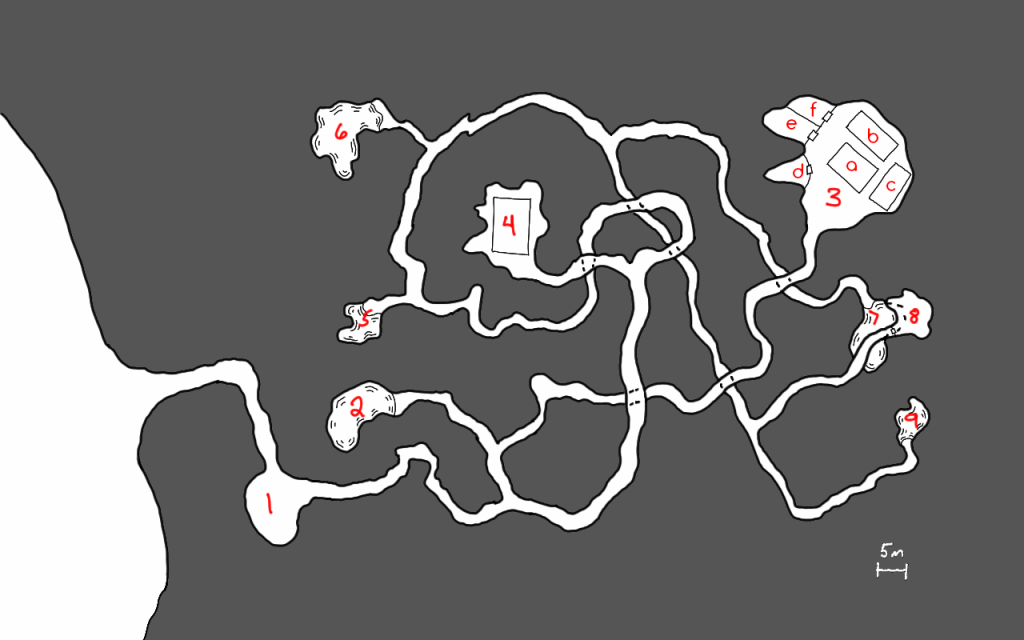This post is a result of me thinking about the smaller ships: shuttles, fighters, even assault scouts. But especially the tiny hull size one and two ships. We’re going to look at an expansion of the engine size chart presented in part 2, adding in some new sizes and more data on the existing engines.
The first thing I was contemplating, and that I’ve know for a while, is that the Class A engines were way overpowered for the very small craft. If you took the stats for a fighter, it comes out to a total mass of about 263 tons. The thrust for a Class A Atomic or Chemical drive is 6250 and an Ion drive has a thrust of 3000. That mean the maximum potential ADF is 23.7 for the atomic and chemical drives and 11.4 for the ion drive. Well over the 6 ADF maximum and the 5 ADF specified for the ships. These smaller ships could easily get by with much smaller engines and still have the same performance. It had always been my intention to add in the smaller engine sizes.
The other issue that has been nagging at me lately is docking, specifically in bays inside a larger vessel. The system takes this into account and allocates bay sizes based on the size of the ship and includes the mass of the docked ships in the ADF calculation. Except the final sizes of the ships don’t include size or mass of the engines! I had originally hand-waved that away saying that the engines were rated to propel themselves plus provide X amount of thrust depending on the size and type of engine. For the larger ships, that’s fine. The engines are external to the ship and it’s really not going to dock inside anything else. But for the little ships, this is an issue and I need mass and volume values to make it all work out.
So that’s the task for today: Calculate the data for some smaller engines for the little ships, and come up with mass and volume values for all the engine types.
And then we can properly build and design assault carriers to hold our fighters (and maybe our assault scouts) and any ship that has one or more shuttles it houses internally. So let’s get started.
Smaller Engines
This is actually the easy part. I intended to make two additional sizes of engines, one about half the performance of the Class A engine, and a second one at half the performance of that.
The hardest bit for me was coming up with a nomenclature. Do I go with the engine size labels from model rocketry (1/2A, 1/4A) to match the A, B, and C sizes of model rockets? Or do I go the battery route and call them AA, and AAA engines. In the end, I decided to go the battery route. So the Class AA engine has about half the performance of the Class A engine, and the Class AAA engine about 1/4 the performance.
The only real constraint I had was that I wanted at Class AAA engine to still provide and ADF of 5 to the standard UPF fighter. Since that fighter has a mass of 274 tons (when configure, it has to provide a thrust of at least 1370.
The thrust ratios between the Class A, B, & C engines are on the order of 3-4. If I maintained that same ratio, then our AA engine at best would only have a thrust rating of 6250/9 = 694, about 700 which is too small. Of course 2 of them would give us the required thrust but all the depictions of the smaller ships are single-engined and I wanted to go with that.
So instead of going down by thirds, decided to go down by halves. Actually a little more in the case of the step from Class A to Class AA with the atomic and chemical drives. With that decision made, it was time to work out the values. That gives us the following table.
Engine Performance Table
| Class A | Class AA | Class AAA | ||||
| Engine Type | Thrust | Cost (cr) | Thrust | Cost (cr) | Thrust | Cost (cr) |
| Chemical | 6,250 | 50,000 | 3,000 | 28,000 | 1,500 | 15,000 |
| Ion | 3,000 | 100,000 | 1,500 | 55,000 | 750 | 30,000 |
| Atomic | 6,250 | 250,000 | 3,000 | 130,000 | 1,500 | 70,000 |
The values for the Class A engines are simply taken from the original post and provided for comparison. Additionally, we need the cost of fuel for each of these new engines types.
Fuel Cost Table
| Engine Type | Class A | Class AA | Class AAA |
| Chemical | 300 | 150 | 75 |
| Ion | 5 | 3 | 2 |
| Atomic | 10,000 | 6,000 | 3,000 |
As with the larger engines, the atomic engines require the atomic fuel pellet at the prices listed plus a load of Chemical fuel as well.
Unlike the larger atomic engines, which can hold more than a single fuel load, the AA and AAA atomic engines can only hold a single load. Additionally, the smaller ion engines can only hold 5,000 fuel units instead of 10,000 like their full-sized siblings.
Volumes and Masses
Now for the harder part. Generating volumes and masses for these various engines.
Engine Volume
There really isn’t much go to on here. I could look at the miniatures, but they were created more for style than with any eye for consistency between the ships. There are also a few drawing in the game books that might be used as a reference. In the end, I did the following.
I started with my 3D model of the assault scout which is based on the drawings of the ship all through the books. I then assumed that this plus the wing of the assault scout represented the volume of the engine plus the fuel tanks needed to hold the three units of fuel for the engine. This gave me a volume, based on my models of 657 cubic meters. We’ll round that down to 600 cubic meters and call it good. That’s the volume of a Class A atomic engine and its associated fuel tanks.
Now, anyone who looks at real rockets will immediately realize that that isn’t a lot of volume for fuel. For example, the space shuttle’s external tank had a volume of just over 2000 cubic meters. And that’s enough to make one trip up, not one and back, let alone three trips. So we’re dealing with some amazing rocket propellant here (and really cheap too). But that’s okay, I’m willing to have handwavium as a fuel additive in our rockets.
The next thing we need is a scaling relation for the larger (and smaller) engines. It has to account for the larger fuel load in the larger engines, And remembering that for the atomic engines, we can hold additional loads over the three in the Class A engines. At the very least, it has to scale up as the thrust scales. But I want to add a little more on top of that.
At one point in the past, I had made 3D models of Class A, B, & C atomic engines. At some point when I created them, I had some rationale for why they were the size they were. I don’t remember that rationale now (and it may have been purely aesthetic), but I figured I could at least look at them and see what the relationships were.
In the end I decided that the scaling for the volumes would be 1.45 times the scaling in the thrust. That would provide a baseline and then I’d adjust the numbers slightly to get nice “round” numbers (i.e. 2800 instead of 2782.5). On the smaller engines, I adjusted things up bit making the engines slightly larger to account for “minimum” sizes for some of the components and fuel tanks. I also made some adjustments to the various types of engines to account for the type and amount of fuel they carry.
Engine Mass
This one was much easier as it was to be based off of the volume. In this case I just assumed an “average” density for each type of engine and its fuel. The question was what to pick.
Modern rocket fuels are actually very light, on the order of 0.7-1.0 tons per cubic meter, less dense than water. And liquid hydrogen, the primary fuel in ion engines, is amazing light at only 0.07 tons per cubic meter. On the other hand, the actual engine parts are going to be much more dense to withstand the forces and pressures being exerted.
So in the end I compromised. Chemical engines would have an average density of 2 tons/cubic meter, ion engines would be 1.5 to reflect their much lighter fuel, and atomic engines would be 2.5 to represent the additional components that give them their special properties.
Engine Data
With all of those items figured out we can now build the full data table on each of the engine types.
Chemical Engines
| Size | Thrust | Cost (cr) | Fuel Cost (cr) | Volume (m3) | Mass (tons) |
| AAA | 1,500 | 15,000 | 75 | 100 | 200 |
| AA | 3,000 | 28,000 | 150 | 200 | 400 |
| A | 6,250 | 50,000 | 300 | 400 | 800 |
| B | 20,000 | 175,000 | 1,000 | 2,000 | 4,000 |
| C | 80,000 | 770,000 | 4,200 | 12,000 | 24,000 |
Ion Engines
| Size | Thrust | Cost (cr) | Fuel Cost (cr) | Volume (m3) | Mass (tons) |
| AAA | 750 | 30,000 | 2 | 100 | 150 |
| AA | 1,500 | 55,000 | 3 | 200 | 300 |
| A | 3,000 | 100,000 | 5 | 500 | 750 |
| B | 10,000 | 400,000 | 17 | 2,500 | 3,750 |
| C | 40,000 | 200,000 | 70 | 15,000 | 22,500 |
Atomic Engines
| Size | Thrust | Cost (cr) | Fuel Cost (cr) | Volume (m3) | Mass (tons) |
| AAA | 1,500 | 70,000 | 3,000 | 100 | 250 |
| AA | 3,000 | 130,000 | 6,000 | 200 | 500 |
| A | 6,250 | 250,000 | 10,000 | 600 | 1500 |
| B | 20,000 | 400,000 | 32,000 | 2,800 | 7,000 |
| C | 80,000 | 6,000,000 | 125,000 | 16,000 | 40,000 |
Impacts
So how does this impact our smaller ships? Most importantly, I want to see what it does for fighters and digger shuttles, the two small ships that are explicitly included inside larger vessels.
Using this system before the changes to the engines, we had the following characteristics for the two ships:
- Fighter – mass: 274 tons, volume: 136 m3, 1 Class A Atomic engine, Max loaded ADF: 22.8
- Digger shuttle – mass: 1330 tons, volume: 641 m3, 1 Class A Chemical engine, Max loaded ADF: 4.7
If we were to just update these vessels with the data for the original engines, the volume of the fighter would jump to 736 m3 with a mass of 1774 tons, an increase of 441% and 547% respectively. The digger shuttle isn’t quite as bad as it was bigger to begin with but it would increase to 1041 m3 and 2130 tons, increases of 62% and 60%.
However, these ships don’t need this large of an engine. If its occupants could handle it, the Class A engines on the fighter give it a maximum possible ADF of 22.8. Since it is only supposed to have an ADF of 5, we can swap out the Class A engine for a Class AAA engine. It will still have a maximum ADF of 5.5. With that change, the the fighter now has a volume of 236 m3 (a 74% increase) and a mass of 524 tons (a 91% increase). Still larger, but much more reasonable and easier to pack into our assault carriers. It also reduces the cost of the fighter by 180,000 credits. Since the original cost was 528,151 cr., reducing that by 180,000 is a savings of 34%. And that makes the bean counters at Spacefleet happy.
The default Class A chemical engine on the digger shuttle gives it a maximum ADF of 4.7, well within the species limit of 5. However, it only really needs an ADF of at least 2 to get on and off planets, so here we can get away with a Class AA chemical engine. This still leaves the shuttle with a max ADF of 2.3, reduces the cost of the shuttle by 22,000 cr., and put the final volume and mass at 841 m3 and 1730 tons (increases of 32% and 30% over the original), making them easier to store in the mining ships. Since the digger shuttle was original 140,320 cr., the 22,000 cr. reduction saves nearly 16% off the cost of the shuttle.
And for the curious, the Assault Scout has a volume and mass of 3455 m3 and 2458 tons. Adding in its two Class A atomic engines brings its total volume up to 4655 m3 and total mass up to 5558 tons (increases of 35% and 126%). That makes it 20x larger and 11x more massive than a fighter. So it’s not unreasonable that special carriers might be designed to transport the larger ships.
Final Thoughts
I definitely like the direction of this change. The size of the fuel storage is probably unreasonably small, but that’s just going to be part of the fiction of our science fiction. The exact values might change as this sees a bit more play but I think it serves as a solid baseline to build on.
What are your thoughts and ideas on this update to the engines? Let me know in the comments below.





